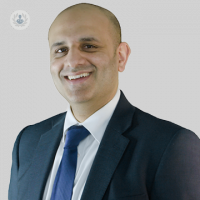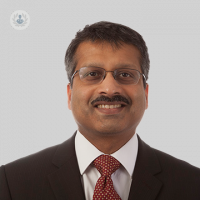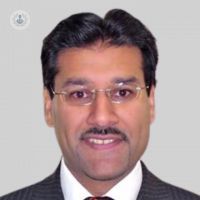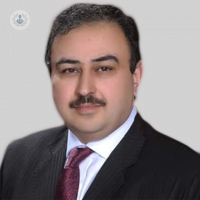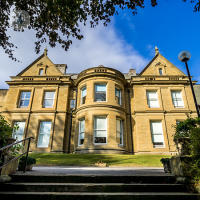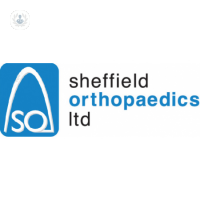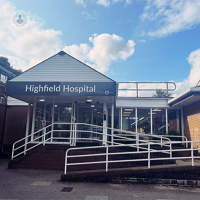What is cartilage repair?

Cartilage is the smooth, white tissue that covers the surface of joints. It reduces friction and acts as a shock absorber. Cartilage damage can occur as a result of a sudden injury, a sports injury or wear and tear (osteoarthritis).
Cartilage damage can affect the hips, ankles and elbows, but is most common in the knees (articular cartilage). Minor injuries can heal on their own, but severe cartilage damage will require surgery.
Cartilage repair is the repair, regeneration or replacement of damaged cartilage with surgical techniques if cartilage doesn’t heal on its own or with the use of physical therapy and medication.
Why is cartilage repair carried out?
Cartilage repair is carried out to restore damaged cartilage around joints, relieve pain and stiffness and restore joint function and mobility. It can also delay or prevent the onset of arthritis.
What does cartilage repair involve?
Before surgery is an option, some people heal well with rest, elevation of the damaged joint, physiotherapy and the use of NSAID’s. However, sometimes surgery is needed if the cartilage damage is too great. Most procedures to restore articular cartilage are done with arthroscopic surgery.
The most common surgical procedures to restore cartilage are:
Microfracture
Microfracture stimulates the growth of new cartilage and can be done with an arthroscope(an endoscope placed into the joint through a small incision). A sharp tool (awl) is used to make a number of holes in the bone under the cartilage, called the subchondral bone. This allows a new blood supply to reach the joint, bringing new cells that will form new cartilage.
Drilling
Drilling stimulates the growth of new cartilage by making small holes in the bone below the cartilage, using a surgical drill. This procedure can also be carried out with an arthroscope.
Abrasion Arthroplasty
This procedure can be done with an arthroscope and is similar to drilling. Burrs are used to make incisions into the bone, the damaged cartilage is removed and new cartilage is generated in the healing process.
Autologous Chondrocyte Implantation
This procedure involves removing healthy cartilage tissue which contains healthy cartilage cells. These are then sent to a laboratory to be multiplied. This procedure is done with an arthroscope.
Open surgery or an arthrotomy is then carried out to implant the new cells into the damaged cartilage. ACI is used more for younger patients and it can take a number of weeks.
Osteochondral Autograft Transplant
A graft of healthy cartilage tissue and bone is transferred from one part of the joint that doesn’t bear weight to the damaged part of the joint. This operation is good for small joint injuries and can be done with an arthroscope.
Osteochondral Allograft Transplant
This procedure requires a larger incision and is used for bigger injuries. The allograft is a block of cartilage and bone and unlike the autograft transplant, the cartilage is taken from a donor, rather than the patient themselves.
Stem cells
Although the application of stem cells to stimulate the growth of new cells and cartilage is still under investigation, current research is focused on this. Mesenchymal stem cells, from living human tissue, when placed in a certain environment can generate new cells.
How can I prepare for cartilage repair?
Your doctor will decide on the best surgical procedure for you, based on your age, medical history and degree of cartilage damage. There is no preparation for cartilage repair procedures, apart from resting the damaged joint and offloading any unnecessary weight before a procedure.
What does post-operative care involve?
Post-surgery, if the surgery was done on the knee, you may have to use crutches to offload any extra weight from the joint to allow it to heal.
Physical therapy may be advised to reduce stiffness and increase mobility. Sometimes continuous passive motion therapy is used.
Recovery from an arthroscopy is much quicker and less painful than open surgery. It is normal for a full recovery to take several months.
06-06-2023Reparación de cartílago
What is cartilage repair?

Cartilage is the smooth, white tissue that covers the surface of joints. It reduces friction and acts as a shock absorber. Cartilage damage can occur as a result of a sudden injury, a sports injury or wear and tear (osteoarthritis).
Cartilage damage can affect the hips, ankles and elbows, but is most common in the knees (articular cartilage). Minor injuries can heal on their own, but severe cartilage damage will require surgery.
Cartilage repair is the repair, regeneration or replacement of damaged cartilage with surgical techniques if cartilage doesn’t heal on its own or with the use of physical therapy and medication.
Why is cartilage repair carried out?
Cartilage repair is carried out to restore damaged cartilage around joints, relieve pain and stiffness and restore joint function and mobility. It can also delay or prevent the onset of arthritis.
What does cartilage repair involve?
Before surgery is an option, some people heal well with rest, elevation of the damaged joint, physiotherapy and the use of NSAID’s. However, sometimes surgery is needed if the cartilage damage is too great. Most procedures to restore articular cartilage are done with arthroscopic surgery.
The most common surgical procedures to restore cartilage are:
Microfracture
Microfracture stimulates the growth of new cartilage and can be done with an arthroscope(an endoscope placed into the joint through a small incision). A sharp tool (awl) is used to make a number of holes in the bone under the cartilage, called the subchondral bone. This allows a new blood supply to reach the joint, bringing new cells that will form new cartilage.
Drilling
Drilling stimulates the growth of new cartilage by making small holes in the bone below the cartilage, using a surgical drill. This procedure can also be carried out with an arthroscope.
Abrasion Arthroplasty
This procedure can be done with an arthroscope and is similar to drilling. Burrs are used to make incisions into the bone, the damaged cartilage is removed and new cartilage is generated in the healing process.
Autologous Chondrocyte Implantation
This procedure involves removing healthy cartilage tissue which contains healthy cartilage cells. These are then sent to a laboratory to be multiplied. This procedure is done with an arthroscope.
Open surgery or an arthrotomy is then carried out to implant the new cells into the damaged cartilage. ACI is used more for younger patients and it can take a number of weeks.
Osteochondral Autograft Transplant
A graft of healthy cartilage tissue and bone is transferred from one part of the joint that doesn’t bear weight to the damaged part of the joint. This operation is good for small joint injuries and can be done with an arthroscope.
Osteochondral Allograft Transplant
This procedure requires a larger incision and is used for bigger injuries. The allograft is a block of cartilage and bone and unlike the autograft transplant, the cartilage is taken from a donor, rather than the patient themselves.
Stem cells
Although the application of stem cells to stimulate the growth of new cells and cartilage is still under investigation, current research is focused on this. Mesenchymal stem cells, from living human tissue, when placed in a certain environment can generate new cells.
How can I prepare for cartilage repair?
Your doctor will decide on the best surgical procedure for you, based on your age, medical history and degree of cartilage damage. There is no preparation for cartilage repair procedures, apart from resting the damaged joint and offloading any unnecessary weight before a procedure.
What does post-operative care involve?
Post-surgery, if the surgery was done on the knee, you may have to use crutches to offload any extra weight from the joint to allow it to heal.
Physical therapy may be advised to reduce stiffness and increase mobility. Sometimes continuous passive motion therapy is used.
Recovery from an arthroscopy is much quicker and less painful than open surgery. It is normal for a full recovery to take several months.


How does cartilage regeneration repair damaged or lost knee cartilage?
Por Mr Bilal M. Barkatali
2024-11-23
A leading knee specialist, Mr Bilal Barkatali, shares his professional insight into your options for cartilage regeneration for your knee. Ver más
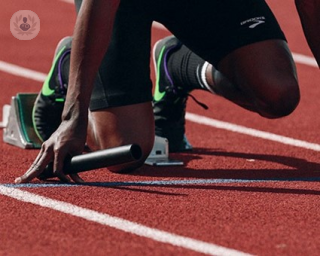

Cartilage repair surgery: everything you need to know
Por Mr Paul Sutton
2024-11-22
Esteemed consultant orthopaedic surgeon Mr Paul Sutton provides an in-depth discussion on knee cartilage repair, explaining the various techniques used, recovery time and success rates. Ver más


Cartilage transplant: what happens during surgery?
Por Mr Sujith Konan
2024-11-21
Cartilage transplant can be used to treat joints that cause pain or swelling but is usually undertaken after other techniques such as rest, physiotherapy and activity modification have failed to resolve symptoms. Expert orthopaedic surgeon Mr Sujith Konan explains more... Ver más


Knee cartilage repair: microfracture or nanofracture procedure?
Por Mr Turab Syed
2024-11-20
Nanofracture and microfracture are similar surgical techniques which lead to knee cartilage regeneration, but what's the difference? Leading consultant orthopaedic and trauma surgeon Mr Turab Syed details just what distinguishes one from the other in this detailed guide to the procedures. Ver más
Doctores expertos en Reparación de cartílago
-
Mr Wiqqas Jamil
TraumatologíaExperto en:
- Prótesis de rodilla
- Recambios de cadera
- Reconstrucción del ligamento cruzado anterior
- Lesiones deportivas
- Artrosis
- Reparación de cartílago
-
Mr Ravindran Kuzhupilly Ranjith
TraumatologíaExperto en:
- Prótesis de rodilla
- Cirugía robótica
- Cirugía de prótesis parcial de rodilla o unicondílea
- Revisión reemplazo de rodilla
- Recambios de cadera
- Reparación de cartílago
-
Mr Ayaz Lakdawala
TraumatologíaExperto en:
- Prótesis de rodilla
- Reconstrucción del ligamento cruzado anterior
- Artroscopia de rodilla
- Reparación de cartílago
- Infiltraciones articulares
- Lesiones deportivas
-
Mr Amer Khan
TraumatologíaExperto en:
- Lesiones deportivas
- Hombro
- Reconstrucción del ligamento cruzado anterior
- Artroscopia de rodilla
- Meniscos
- Reparación de cartílago
-
Mr Turab Syed
TraumatologíaExperto en:
- Tendinitis tobillo
- Recambios de cadera
- Cirugía de pie y tobillo
- Lesiones deportivas
- Reparación de cartílago
- Prótesis de rodilla
- Ver todos

Thornbury Hospital - part of Circle Health Group
Thornbury Hospital - part of Circle Health Group
312 Fulwood Road, Sheffield S10 3BR
No existe teléfono en el centro.
Si haces uso de este teléfono facilitado por TOP DOCTORS nos autorizas al tratamiento de tu teléfono para fines estadísticos y comerciales. Para más información, lee nuestra Política de Privacidad
Top Doctors

Sheffield Orthopaedics Ltd
Sheffield Orthopaedics Ltd
Claremont Hospital, 401 Sandygate Rd, Sheffield
No existe teléfono en el centro.
Si haces uso de este teléfono facilitado por TOP DOCTORS nos autorizas al tratamiento de tu teléfono para fines estadísticos y comerciales. Para más información, lee nuestra Política de Privacidad
Top Doctors

The Highfield Hospital - part of Circle Health Group
The Highfield Hospital - part of Circle Health Group
Manchester Road, Rochdale, Lancashire, OL11 4LZ
No existe teléfono en el centro.
Si haces uso de este teléfono facilitado por TOP DOCTORS nos autorizas al tratamiento de tu teléfono para fines estadísticos y comerciales. Para más información, lee nuestra Política de Privacidad
Top Doctors
-
Thornbury Hospital - part of Circle Health Group
312 Fulwood Road, Sheffield S10 3BR, SheffieldExperto en:
- Cardiología
- Cirugía colorrectal
- Endocrinología, Nutrición y Tiroides
- Endoscopia digestiva
- Fertilidad
- Otorrinolaringología
-
Sheffield Orthopaedics Ltd
Claremont Hospital, 401 Sandygate Rd, Sheffield, SheffieldExperto en:
- Cadera
- Cirugía ortopédica
- Cirugía ortopédica espinal
- Hombro y codo
- Reemplazo de la articulación
-
The Highfield Hospital - part of Circle Health Group
Manchester Road, Rochdale, Lancashire, OL11 4LZ , RochdaleExperto en:
- Cardiología
- Cirugía ortopédica
- Cirugía plástica, estética y reparadora
- Dermatología
- Diagnóstico por imagen
- Endocrinología
- Ver todos
